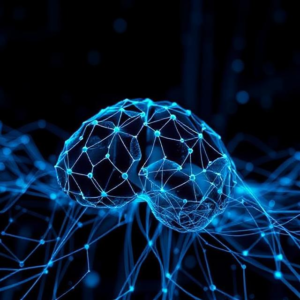1. What is a Neural Network?
A neural network is a type of artificial intelligence (AI) that mimics how the human brain works. It consists of layers of nodes (neurons) that process and learn from data. When we train a neural network, it can recognize patterns, make predictions, or classify data (like recognizing images or understanding speech).
Think of it like teaching a child to recognize pictures of cats. The more pictures the neural network sees, the better it gets at identifying them, just like a child learns through experience.

2. What Does Neural Network Have to Do with Hardware Design?
In hardware design, engineers create the physical circuits and systems that power electronic devices like computers, smartphones, and more. Neural networks can be used in hardware design to help optimize and improve how these devices work.
Here’s where it gets interesting: Neural networks are now being used to design and improve hardware itself. They can help create better, more efficient circuits, or even design chips (like the brain of a smartphone or computer).
3. How Are Neural Networks Used in Hardware Design?
A. Optimizing Circuit Layouts
When designing an electronic circuit, engineers need to arrange components in the most efficient way. This involves figuring out how to connect everything to make it work as quickly and efficiently as possible.
Neural networks can help by looking at lots of different circuit layouts and learning which ones work best. The network can then suggest improvements or new layouts that engineers might not have considered, helping to save time and reduce errors.
B. Automating Design Tasks
Traditionally, designing hardware circuits can take a long time because engineers need to do a lot of manual calculations and testing. Neural networks can automate many of these tasks by predicting the best design options based on data they’ve been trained on. For example, if a neural network has been trained with thousands of circuit designs, it can predict what works well and what doesn’t, speeding up the process.
C. Enhancing Chip Design
A chip is a small piece of hardware that controls many functions in a device, like processing information or running apps. Designing chips is complex because they need to be powerful yet energy-efficient, small, and cost-effective.
Neural networks are used to help with chip design by analyzing and optimizing how transistors (the tiny switches in chips) are placed and how they interact. The neural network can help make chips that are more powerful and efficient, while also reducing the time and cost to design them.
D. Fault Detection and Repair
Sometimes, hardware designs don’t work as expected or have small errors. Neural networks can be used to detect faults in designs by learning patterns from successful designs and spotting where things go wrong. If a mistake is found, the neural network can suggest fixes to improve the design before it’s built.
E. Simulating Hardware Performance
Before a hardware design is actually built, engineers often need to test how it will perform. Neural networks can simulate how a design will behave in real-world conditions. For example, they can predict how much power a chip will consume or how fast it will run, helping engineers make decisions on whether the design is ready or needs adjustments.
4. Benefits of Using Neural Networks in Hardware Design
- Faster Design Process: Neural networks can quickly analyze large amounts of design data and make recommendations, speeding up the overall design process.
- More Efficient Designs: Neural networks help create hardware that performs better, consumes less power, and is cheaper to manufacture.
- Improved Accuracy: By learning from tons of data, neural networks can detect flaws or issues in designs that might be hard for humans to spot, leading to more accurate designs.
- Automation: Many tasks that used to take engineers days or weeks can now be automated using neural networks, making the entire design process smoother.
5. Real-World Example:
Let’s say engineers are designing a smartphone chip. They want it to be fast, power-efficient, and small. Neural networks can help:
- Optimize how transistors are arranged in the chip to maximize performance.
- Predict how much energy the chip will use and adjust the design for better battery life.
- Simulate how the chip will handle real-world tasks like running apps or processing data, ensuring the chip works well in the final product.
6. Summary:
Neural networks in hardware design are like super-smart assistants that can help engineers design better, more efficient electronic devices. They can analyze data, suggest improvements, detect errors, and automate repetitive tasks. With neural networks, engineers can create advanced hardware faster, more accurately, and with better performance.











